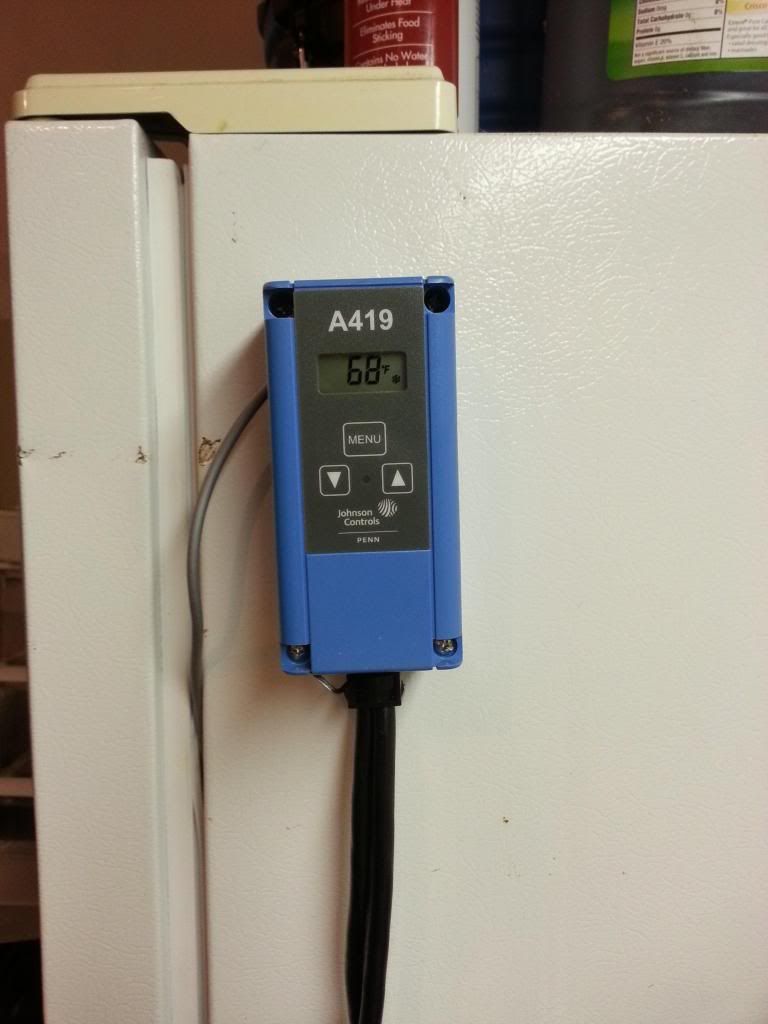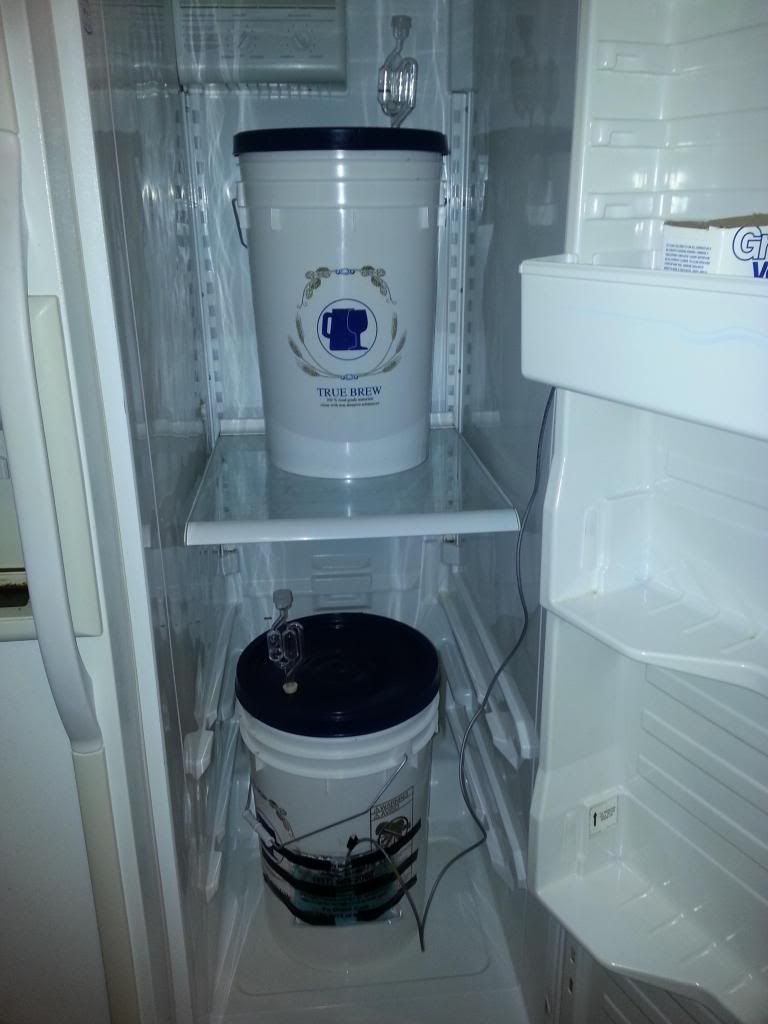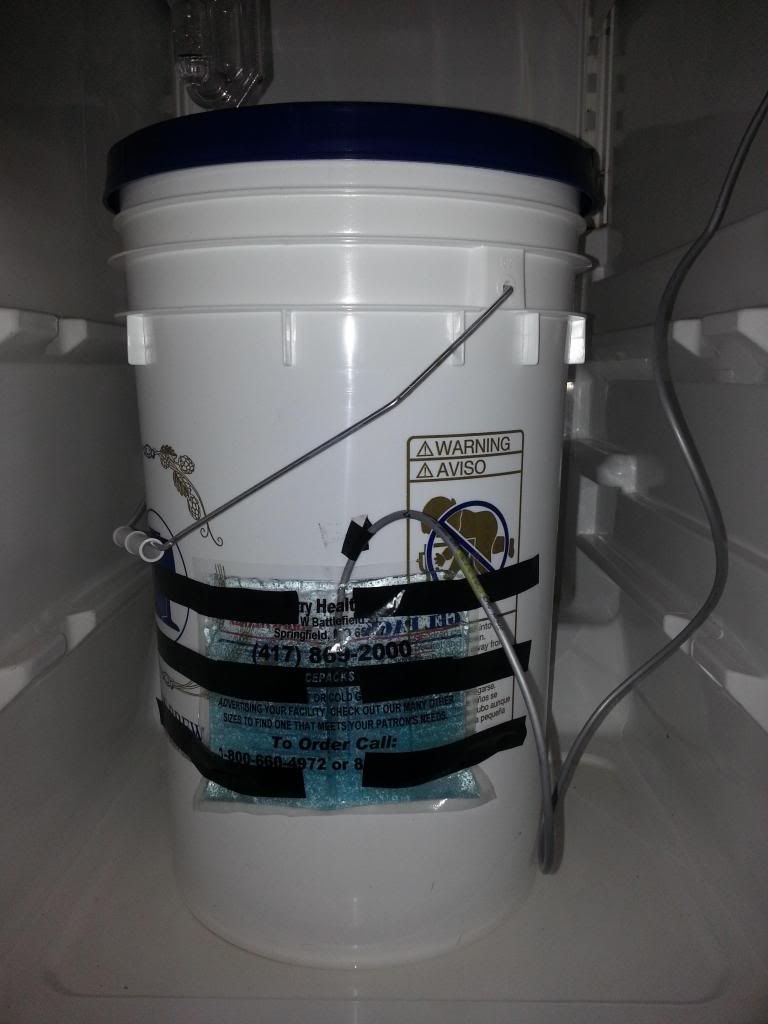PhilipLoyd
Member
- Joined
- Jul 28, 2013
- Messages
- 14
- Reaction score
- 2
Ok, here goes. This is my first homebrew. I have been reading the forum for weeks. This home brewing has taken over my thoughts and wallet for the last five weeks. I started with two batches of beer from kits, Irish Stout and Red Ale. I repurposed a double wide fridge into a fermentation chamber with a Johnson temperature controller at 67-69.



I am now sitting at two weeks of fermenting in the primaries. I plan on going three weeks. Hydrometer readings for confirmation. My question is about cold crashing and kegging. I want the beer to be the best it can be, so I will be patient as I can be. I would like to cold crash in the primaries by just setting the Johnson controller to 32 degrees for four days. Then racking into corny kegs. My assumption is to rack with the beer cold so the sediment would stay out of suspension. Now, people talk about aging the beer for a few weeks in the keg at room temperature by removing oxygen by pressurizing the keg and venting a few times, then unhook and leave a room temperature. I'm wondering does this really matter or could I just put it in the kegerator under serving pressure and just let it slow carb for a couple weeks. Any hints, opinions, tips on the above process?



I am now sitting at two weeks of fermenting in the primaries. I plan on going three weeks. Hydrometer readings for confirmation. My question is about cold crashing and kegging. I want the beer to be the best it can be, so I will be patient as I can be. I would like to cold crash in the primaries by just setting the Johnson controller to 32 degrees for four days. Then racking into corny kegs. My assumption is to rack with the beer cold so the sediment would stay out of suspension. Now, people talk about aging the beer for a few weeks in the keg at room temperature by removing oxygen by pressurizing the keg and venting a few times, then unhook and leave a room temperature. I'm wondering does this really matter or could I just put it in the kegerator under serving pressure and just let it slow carb for a couple weeks. Any hints, opinions, tips on the above process?



